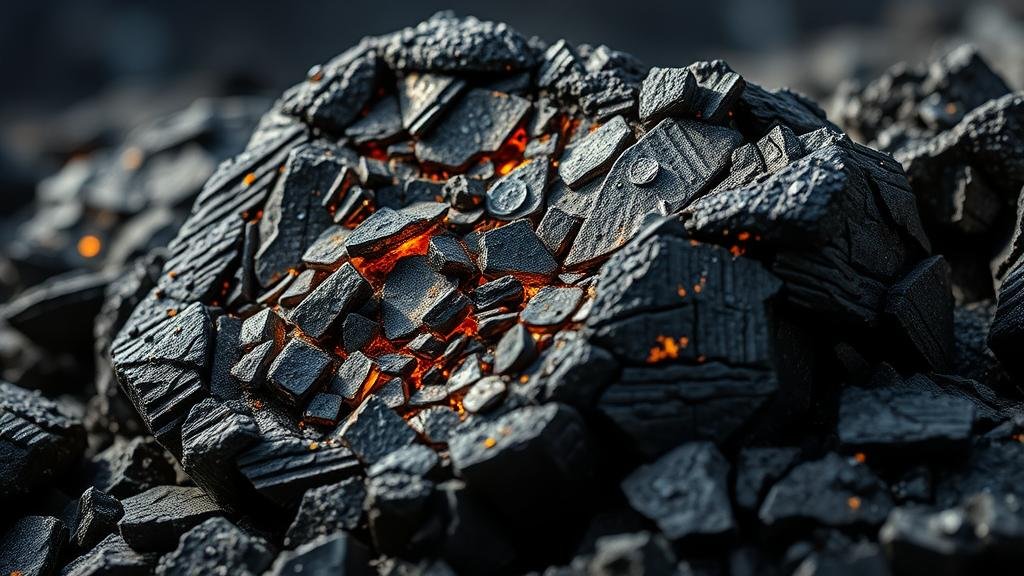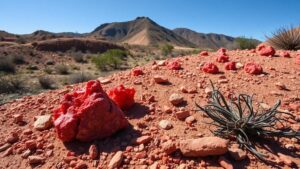Meteorite Iron Treasures: Exploring Cosmic Metal Deposits in Remote Locations
Meteorite Iron Treasures: Exploring Cosmic Metal Deposits in Remote Locations for Rockhounds and Mineral Collectors
Meteorite iron, a precious treasure for rockhounds and mineral collectors, offers a unique glimpse into our solar systems history. Composed primarily of iron and nickel, these cosmic metals are remnants of asteroids or planetary bodies that once roamed the cosmos. Collecting meteorite iron requires knowledge of meteorite types, locations, and ethical practices. This article explores the significance of meteorite iron, where to find it, and tips for collectors.
The Science Behind Meteorite Iron
Meteorite iron primarily consists of two main types: chondrites and siderites. Siderites, containing a significant amount of iron, are mostly metallic and can show a unique Widmanstätten pattern, a crystallization pattern that forms during the cooling of the metal in space. According to a study by the Smithsonian Institution, about 86% of the known meteorites are chondrites, while up to 8% are metallic iron meteorites.
Common chemical compositions can include:
- Nickel (Fe-Ni) ratio typically ranging from 5% to 25%
- Trace elements like cobalt, germanium, and iridium
Understanding these compositions is vital for collectors as it influences the meteorites value and classification.
Where to Find Meteorite Iron
Finding meteorite iron can often feel like a treasure hunt, requiring collectors to explore remote locations known for meteorite falls. Here are a few notable hotspots:
- Antarctica: It is a meteorite collectors paradise, with its icy terrain preserving innumerable meteorites. The U.S. Antarctic Search for Meteorites (ANSMET) has reported recovering over 45,000 meteorites since 1976.
- Chiles Atacama Desert: Known for its dryness, this desert is an excellent location for finding iron meteorites, often exposed by erosion.
- Arizonas Meteor Crater: This location not only showcases a significant meteor impact site but also provides opportunities to find meteorite fragments around the crater.
When venturing into these locations, ensure that you have the proper permissions and comply with local regulations regarding meteorite collection.
Collecting Techniques for Successful Finds
When searching for meteorite iron, employing the right techniques can enhance your chances of success. Here are some effective strategies:
- Magnetic Field Detectors: Since most meteorite irons are magnetic due to their metal content, a simple magnet can help you identify potential finds.
- Visual Inspection: Look for unusual shapes and textures that differentiate meteorites from terrestrial rocks. For example, meteorite iron might have a fusion crust or show regmaglypts–small, thumb-like impressions on their surface.
- Site Research: Before heading out, use online databases like the Meteoritical Society Registry to identify specific falls in your target area.
Ethical Considerations and Regulations
Collecting meteorites is an exciting hobby, but it’s essential to approach it ethically. Many countries have laws governing the collection of meteorites, especially on public lands. Always check local laws to ensure you have the right permissions. Its also important to avoid damaging sites where meteorites are found, as these locations can have scientific value beyond the individual specimens.
Real-World Applications and Importance
The significance of studying meteorite iron goes beyond just collection. Researchers can glean insights into planetary formation and the early solar system from these metal deposits. For example, studying the isotopic variations in nickel can help determine the age and origin of meteorites. Plus, unique materials from meteorites are sometimes used in cutting-edge technologies, including aerospace engineering and materials science.
Actionable Takeaways
For rockhounds and collectors excited about meteorite iron, these strategies can help maximize your success:
- Use effective collecting techniques and be prepared with the necessary tools.
- Educate yourself about the types and classifications of meteorites.
- Research locations thoroughly, considering both their scientific value and legal restrictions.
Meteorite iron not only enhances personal collections but also contributes to humanitys understanding of the universe. Explore the cosmos with ethical and informed practices for an unforgettable journey into the world of meteorite iron treasures.


